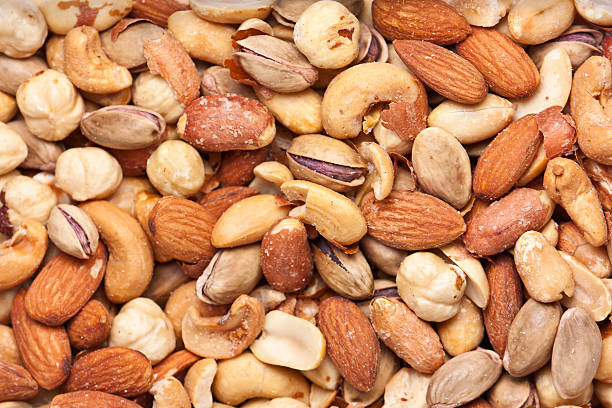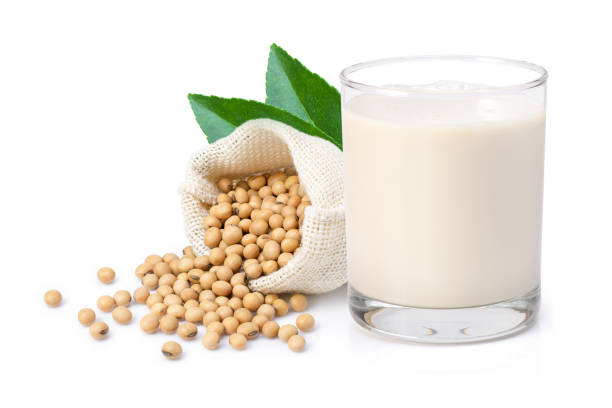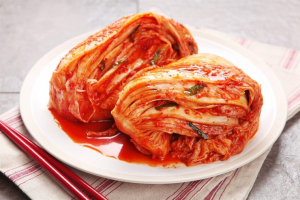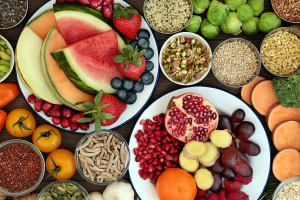Top 9 Most Common Food Allergies
When a person has a food allergy, some foods cause an inappropriate immunological reaction. Your immune system mistakenly labels some of the proteins in food ... read more...as hazardous, which is what causes it. Your body then initiates several defense mechanisms, including the release of inflammatory substances like histamine. Food allergies are quite prevalent. In actuality, they have an impact on 6% of adults and 8% of kids, and these numbers are growing. When someone has a food allergy, even relatively modest exposure to the offending food might result in an allergic response. And here are the most common food allergies.
-
Babies and small children are most frequently affected by a cow's milk allergy. 2-3% of infants and young children suffer from it, making it one of the most widespread childhood allergies. However, by the time they turn 3 years old, 90% of children outgrow the disease, making it considerably less prevalent in adulthood. Both IgE and non-IgE types of a cow's milk allergy are possible, although IgE cow milk allergies are the most prevalent and may also be the most dangerous.
When consuming cow's milk, children or adults with an IgE allergy frequently experience a response within 5–30 minutes. Swelling, rashes, hives, vomiting, and, in rare instances, anaphylaxis are among the symptoms they suffer. Non-IgE allergies typically cause inflammation of the gut wall in addition to additional gastrointestinal symptoms like vomiting, diarrhea, or constipation. It might be challenging to diagnose a milk allergy that is non-IgE. This is due to the fact that there is sometimes no blood test for intolerance but the symptoms may indicate one. Cow's milk and items containing it may need to be eliminated from the diets of nursing moms of infants with allergies. For infants who are not breastfed, a medical practitioner will suggest an appropriate formula other than one based on cow's milk.

Cow’s milk 
Cow’s milk -
It is possible to have an allergy to egg whites but not yolks, and the opposite is also true. This is due to a tiny difference in the proteins found in egg whites and yolks. However, since egg whites contain the majority of the allergen-causing proteins, egg white allergies are more prevalent. An egg-free diet is used as therapy for egg allergies, just like other allergies. However, since boiling eggs can alter the form of the allergy-causing proteins, you might not need to avoid all dishes containing eggs. By preventing your body from recognizing them as toxic, they are less likely to result in a reaction.
In fact, according to one research, over 67% of kids who have an egg allergy can consume muffins with cooked eggs in them. Some research has also shown that giving baked products to kids with egg allergies might speed up the process of their outgrowing their allergy; however, the results are mixed, and more evidence is required to make this claim. If you are allergic to eggs, eating them can have serious negative effects. As a result, you should see your doctor before reintroducing any meals that contain eggs.

Eggs 
Eggs -
People who are allergic to tree nuts will also react negatively to foods prepared with them, such as nut butter and oils. Even if they just have an allergy to one or two varieties, they are recommended to stay away from all tree nuts. This is due to the fact that having a tree nut allergy raises your likelihood of acquiring a nut allergy to other tree nut varieties. In addition, avoiding all nuts rather than just a few particular kinds is simpler. And unlike some other allergies, a tree nut allergy typically lasts a lifetime.
Tree nut allergies, which account for around 50% of anaphylaxis-related fatalities, can also be highly severe. Because of this, it is recommended that persons with nut allergies (as well as other allergies that might be fatal) always have an EpiPen or other epinephrine auto-injector with them. An epinephrine auto-injector is a potentially life-saving tool that enables allergy sufferers to administer an adrenaline shot to themselves in the event of a severe allergic response. When you're anxious, your body releases adrenaline, also known as epinephrine, which activates your "fight or flight" reaction. It can reverse the symptoms of an allergy and save a person's life when administered as an injection to those experiencing a severe allergic response.

Tree nuts 
Tree nuts -
Peanut allergies are quite widespread and can result in serious and even deadly allergic responses, similar to tree nut allergies. However, because peanut is a legume, the two disorders are seen as separate. However, those who are allergic to peanuts are frequently also allergic to tree nuts. Although the exact cause of peanut allergies is unknown, it is believed that those who have a family history of the condition are particularly vulnerable.
This is why it was once believed that introducing peanuts to a baby through the diet of a nursing mother or during weaning would create a peanut allergy. However, research has now indicated that giving children peanuts at a young age may be beneficial. 1-3% of children and up to 2% of adults have a peanut allergy. However, when they enter their teenage years, 15–22% of children who have a peanut allergy discover that it goes away.

Peanuts 
Peanuts -
Your body attacks proteins from the shellfish, sometimes referred to as crustaceans and mollusks, families of fish. This condition is known as a shellfish allergy. Tropomyosin is the protein that causes seafood allergies the most frequently. The proteins arginine kinase and parvalbumin are other candidates that may contribute to the initiation of an immune response. The signs of a shellfish allergy typically appear suddenly and are comparable to those of other IgE food allergies. A real seafood allergy, however, can occasionally be difficult to identify from a negative reaction to a seafood contaminant, such as bacteria, viruses, or parasites.
This is due to the fact that both conditions can cause similar symptoms, including nausea, vomiting, diarrhea, and stomach discomfort. Since a shellfish allergy seldom goes away on its own, the majority of affected individuals must exclude all shellfish from their diet in order to prevent allergic reactions. It's interesting to note that in people who are sensitive to shellfish, even the fumes from frying shellfish might cause an attack. This implies that a lot of individuals are also recommended to stay away from cooking seafood.

Shellfish 
Shellfish -
An allergic reaction to one of the proteins in wheat is known as a wheat allergy. Children typically suffer the most from it. Although, by the time they become 10 years old, children with a wheat allergy frequently outgrow it. A wheat allergy, like other allergies, can cause stomach pain, hives, vomiting, rashes, swelling, and, in extreme cases, anaphylaxis. It is frequently mistaken for celiac disease and non-celiac gluten sensitivity, which can present with the same gastrointestinal symptoms. True wheat allergies, on the other hand, result in an immunological reaction to one of the many proteins contained in wheat. This response could be severe, and occasionally even deadly.
Gluten is a particular protein that is also present in wheat and is the cause of both celiac disease and non-celiac gluten sensitivity. In 10 to 30% of cases, celiac disease can be deadly, but this is uncommon because the majority of sufferers are able to safely avoid gluten. Wheat and other grains that contain gluten protein must be avoided by those who have celiac disease or non-celiac gluten sensitivity. Those who are allergic to wheat need just avoid wheat and can consume gluten from non-wheat cereals. Skin-prick tests are frequently used to identify wheat allergies. The sole remedy is to stay away from items that include wheat and other grains. This calls for staying away from meals, as well as cosmetic and beauty items, that include wheat.

Wheat 
Wheat -
Up to 0.5% of children have soy allergies, which are particularly frequent in newborns and young children under the age of three. A protein found in soybeans or products containing soybeans causes them. However, over 70% of kids with soy allergies outgrow the condition. The signs and symptoms might include everything from a runny nose and itchy, tingling lips to a rash, asthma, or breathing issues. A soy allergy sometimes can also result in anaphylaxis. A tiny percentage of infants with cow's milk allergies also have soy allergies.
Soybeans and soy derivatives like soy milk or soy sauce are common food allergens. It's crucial to check food labels because soy is a common ingredient in many meals. The only way to treat a soy allergy, like other allergies, is to avoid eating it.

Soy 
Soy -
Up to 7% of individuals might experience fish allergies. Similar to other allergies, fish allergies frequently appear in children. However, it's not unusual for a seafood allergy to develop in later life. A fish allergy can result in a significant and even deadly allergic response, similar to a shellfish allergy. Vomiting and diarrhea are the predominant symptoms, however, anaphylaxis can also happen on occasion. As a result, individuals with fish allergies are frequently given epinephrine auto-injectors to carry just in case they consume fish unintentionally.
A fish allergy can occasionally be mistaken for a response to a fish contaminant, such as germs, viruses, or toxins, due to the similarity of the symptoms. Furthermore, those who are sensitive to shellfish could not also be allergic to fish since fish with fins and fish with shells do not have the same proteins. But many individuals with fish allergies are also allergic to one or more fish species.

Fish 
Fish -
Prior to the passage of the Food Allergy Safety, Treatment, Education, and Research (FASTER) Act in 2021, sesame was not formally recognized as a serious food allergy. Sesame was listed as the eighth most common food allergy in the legislation. According to FALCPA regulations, FASTER made sure that food producers had to declare sesame on product labels if it was used as an ingredient. Sesame must be added to food labels by January 1st, 2023.
Only 20% to 30% of kids outgrow their sesame allergy, which affects about 17% of kids with food allergies. When someone has an allergy to sesame, much as with the other main allergens, they have an allergy to the proteins in sesame, which cause an immunological response. In many different world cuisines, including Chinese, Japanese, Middle Eastern, African, and American dishes, sesame is a crucial component. It is mainly used as a topping or cold-pressed cooking oil to add flavor.

Sesame 
Sesame






























